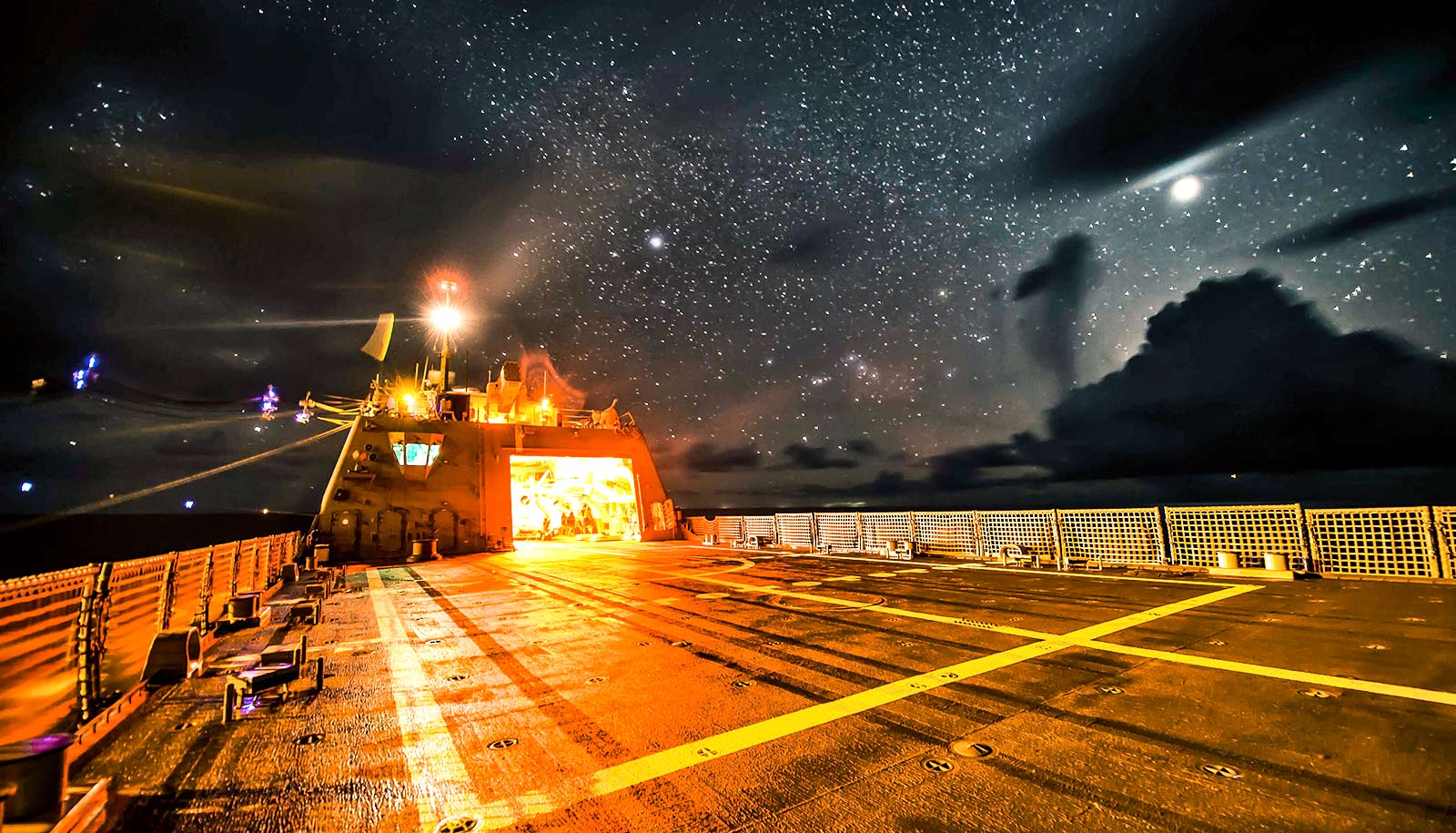For the first time in nearly 20 years, more than 1,200 midshipmen enrolled in the Naval Reserve Officer Training Corps are learning to navigate by the stars with help from a free online program.
In the 1990’s, increasing reliance on navigation technologies including GPS caused the Navy to drop celestial navigation from its officer training curriculum. Now, increasing awareness of the vulnerability of these systems to hacking and other types of disruption has prompted it to reintroduce the requirement.

This spring, as the midshipmen learned how to take sightings of various celestial bodies and then consult a set of nautical tables to “reduce” them to a geographical position, they got an assist from a team of astronomers and educators headed by Susan Stewart, an adjoint assistant professor of astronomy at Vanderbilt University and staff astronomer at the US Natal Observatory in Washington, DC.
In the course of her work, Stewart encountered a number of navigators who told her that one of the major obstacles to using traditional celestial navigation was knowing how to find the right values in the tables and use them correctly. She realized that an online course would be the perfect platform to address this problem.
“I thought it was important to reduce the impediments to celestial navigation, particularly as the vulnerabilities of satellite navigation have become apparent, so it can serve as a viable backup for navigation,” she says.
Navy officers will be better prepared in the future should their fancy satellite navigation systems fail.
In pursuing her idea of creating an online course that could guide people through the complexities of celestial navigation, especially using the complicated tables of positions and corrections, Stewart interested doctoral student Dave Caudel in the project. Caudel, who is a US Army veteran, had produced some instructional videos on how to use an atomic force microscope and was intrigued by the idea.
“Because CelNav is important, is a bit of a lost art, and has some confusing materials that goes along with it, I thought it would be a great challenge to undertake,” says Erica Grundstrom, director of astronomy labs and outreach in the physics and astronomy departments.
In 2014, the three began working on their course, which they dubbed VandyAstroNav. Grundstrom recruited students in several of her labs to test-drive the module and Stewart, who had contacted the Vanderbilt NROTC office, persuaded them to let the midshipman try it out as well. Based on the feedback the students provided, they made a number of refinements.
About the same time that Stewart’s team was putting the final touches on their course, back in Washington, DC, the Chief of Naval Operations issued a directive to the NROTC to add celestial navigation instruction to its curriculum.
“Susan really helped us refine our curriculum,” says Michelle Rea, NROTC’s curriculum manager. “She helped write two courses and trained a number of our instructors. The videos in her online course make it much easier for our students to pick up the basic concepts involved.”
Your brain tissue changes when you learn to navigate
Since VandyAstroNav was launched in April 2015, it has been freely available on the internet. Users have the option to watch the instructional videos alone or to register to take the complete course. In the last two years 1,125 people have signed up for the full course.
In addition to NROTC, instructors at the US Naval Academy, which reintroduced celestial navigation two years ago, reviewed VandyAstroNav while developing their coursework and the Navy’s Surface Weapons Officer School has expressed interest in using it in a refresher course.
Brain’s navigation system isn’t really like GPS
As a result of this effort, Navy officers will be better prepared in the future should their fancy satellite navigation systems fail and they are forced once again to navigate by the stars.
The online course VandyAstroNav is available for free here. A Vanderbilt Center for Teaching Blended and Online Learning Design Fellowship provided funding for this project.
Source: Vanderbilt University



